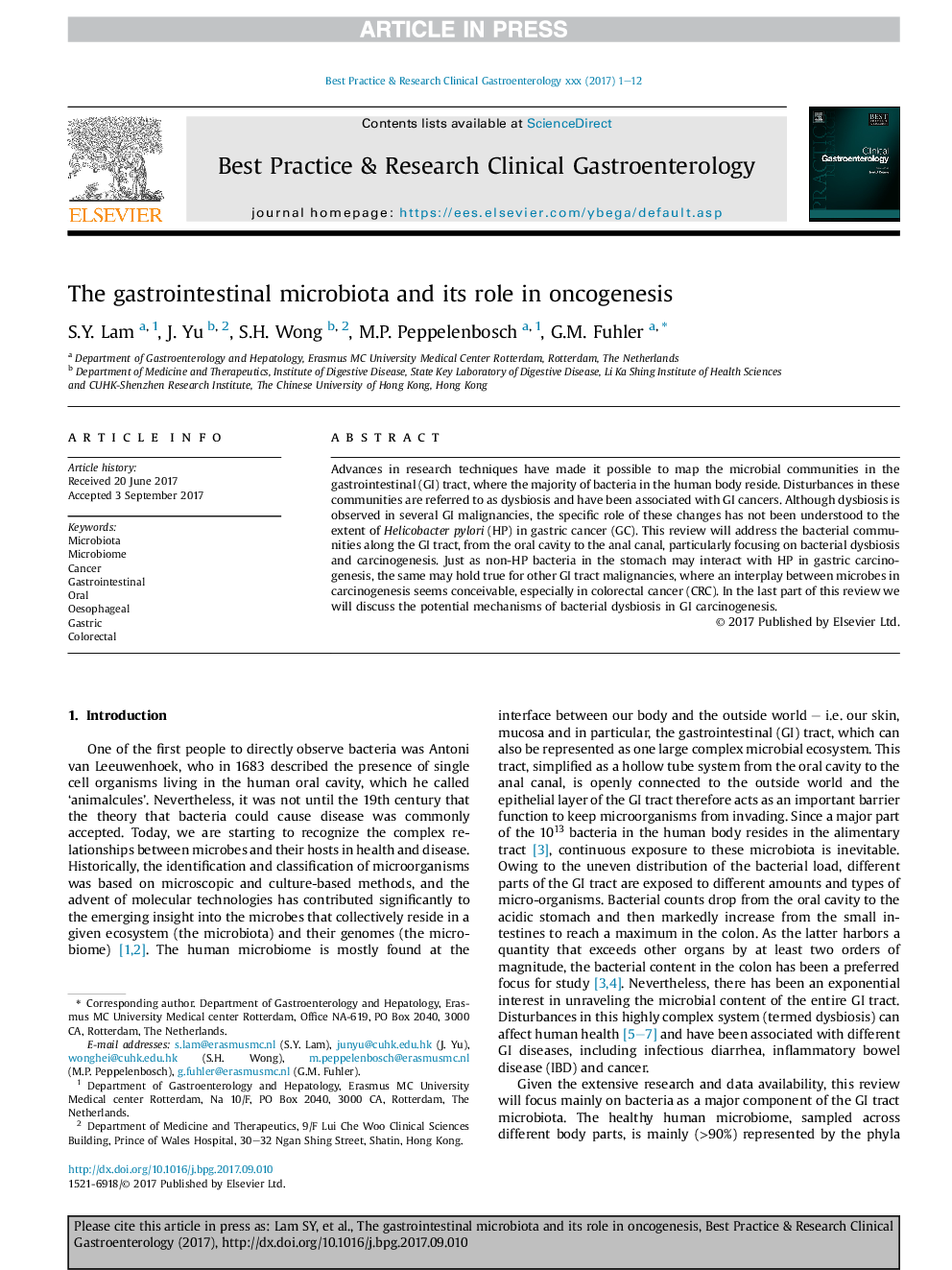| Article ID | Journal | Published Year | Pages | File Type |
|---|---|---|---|---|
| 8720638 | Best Practice & Research Clinical Gastroenterology | 2017 | 12 Pages |
Abstract
Advances in research techniques have made it possible to map the microbial communities in the gastrointestinal (GI) tract, where the majority of bacteria in the human body reside. Disturbances in these communities are referred to as dysbiosis and have been associated with GI cancers. Although dysbiosis is observed in several GI malignancies, the specific role of these changes has not been understood to the extent of Helicobacter pylori (HP) in gastric cancer (GC). This review will address the bacterial communities along the GI tract, from the oral cavity to the anal canal, particularly focusing on bacterial dysbiosis and carcinogenesis. Just as non-HP bacteria in the stomach may interact with HP in gastric carcinogenesis, the same may hold true for other GI tract malignancies, where an interplay between microbes in carcinogenesis seems conceivable, especially in colorectal cancer (CRC). In the last part of this review we will discuss the potential mechanisms of bacterial dysbiosis in GI carcinogenesis.
Related Topics
Health Sciences
Medicine and Dentistry
Endocrinology, Diabetes and Metabolism
Authors
S.Y. Lam, J. Yu, S.H. Wong, M.P. Peppelenbosch, G.M. Fuhler,
